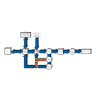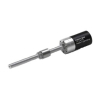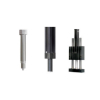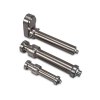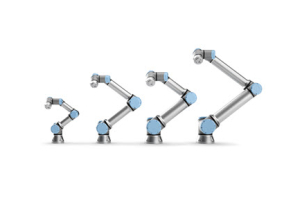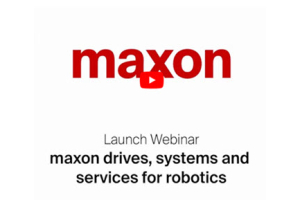Please be aware we use cookies to make your experience better. A cookie is a piece of data stored on a visitor's hard drive to help us improve your access and identify repeat visitors. Cookies can also enable us to track and target the interests of our users to enhance the experience on our site. Usage of a cookie is in no way linked to any personally identifiable non-public information. Learn more.
linear actuator
- Posted: September 28, 2023
What makes a bus based Motion Controller deterministic? What are the three types of Step Motors? What is the difference between an Absolute Encoder and a Resolver? These questions (and many more) are quickly answered Motion Control Technology Primer...
Categories: Automation 101 - Posted: September 21, 2023
This comprehensive guide aims to facilitate informed decision-making for engineers ranging from entry-level to veterans, encompassing a thorough exploration of the components, cost implications, and ideal applications of these mechanisms...
Categories: Technical Support - Posted: September 07, 2023
Understanding the nuances between different kinds of actuators - namely pneumatic, hydraulic, and electrical - can provide engineers, from entry-level to advanced, with a clear perspective to choose the appropriate type for their applications. In this article, we will delve into each of these actuator types, delineating their components, pros and cons, and comparing their characteristics and costs...
Categories: Whitepapers - Posted: February 22, 2022
A new RSH electric hygienic rod-style actuator from Tolomatic delivers clean, continuous control to automation machinery.
Categories: Product Announcements - Posted: November 20, 2014
H-Bot gantries from Macron Dynamics feature a lightweight and modular design, allowing systems to reach areas in large envelopes at a high speed and with high repeatability. H-Bot gantries provide economic solutions for a range of manufacturing applications including:
-3D printing
-Packaging automation
-Material cutting and scribing
-And more!
Learn more about H-Bot capabilities here: https://bit.ly/1vCTJMT
More information on the complete Macron Dynamics Product Line can be viewed at
https://www.electromate.com/products/?partner=1031080155
For more information, please contact:
EDITORIAL CONTACT:
Warren Osak
sales@electromate.com
Toll Free Phone: 877-737-8698... - Posted: September 09, 2014
When you need to specify a linear actuator, you want to do it right. Some basic decisions come first. Like electric or pneumatic. See Tolomatic’s recent blogpost for an overview of the advantages and disadvantages of pneumatic versus electric linear actuators.
If electric is selected, you’ll next need to decide if a rod or rodless linear actuator is the best choice. Tolomatic offers both types of electric linear actuator, so you can count on us for motion control advice and application expertise.Selection tips
Here are our tips for specifying the right electric linear actuator for the task.
1. Calculate size for...Categories: Technical Support - Posted: August 07, 2014
PowerPoint Presentation by Gary Rosengren, Director of Engineering at Tolomatic
The lead screw is an essential component in many electric linear actuators. When selecting the type of lead screw a linear actuator should have, you need to strike a balance between purchase price and performance characteristics to get full value.
This new slideshow from Tolomatic shares the advantages and limitations of acme, ball and roller...Categories: Technical Support - Posted: June 24, 2014
A New White Paper from Tolomatic.
IP Ratings & the Manufacturing Environment: How to apply linear actuators for quality, safety and long service life.
Click on the link below to download this White Paper.
https://mail.tolomatic.com/archives/pdfs/9900-9207_00-IP-Environments.pdf
Tags: IP Rating, Linear Actuator, Electric Linear Actuator, Linear Positioner, Rodless Cylinder, Rod Style CylinderCategories: Technical Support - Posted: May 01, 2014
Source: Tolomatic Blog. Originally posted by Gary Rosengren on Tue, Apr 22, 2014 @ 08:39 AM
Motion system designers often need to evaluate competing components to select the best one for an application. For linear actuators and other motion system components, the decision generally comes down to which product will provide the longest service life given the specifications of the project.
Manufacturers give you performance data which can serve as guidelines for componenselection and use. Keep in mind, though, this information is for the individual component only and may not relate directly to the configuration and conditions of your application.
When you’re comparing data from different manufacturers, be sure you’re comparing apples to apples. For linear actuators you may need to normalize the data of all the rolling elements (such as the ball screw or roller...
Categories: Technical Support - Posted: March 31, 2014
New YouTube Video- 54:01 min.
View our on-demand Webinar anytime!
You can watch a recording of this webinar and previously recorded webinars on our YouTube channel:
https://www.youtube.com/playlist?list=PLrKivfJ0mSQlLyxYe3Q8_6eZaWP7Ket2V...

